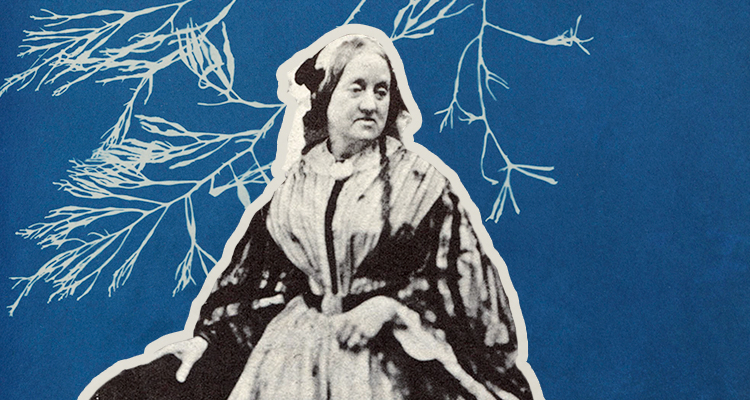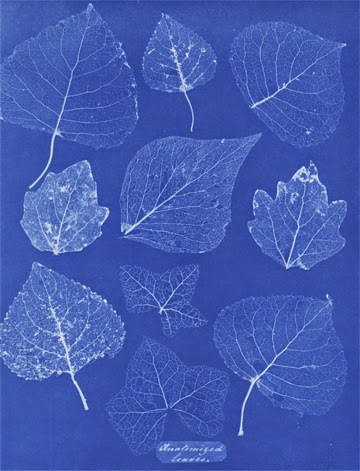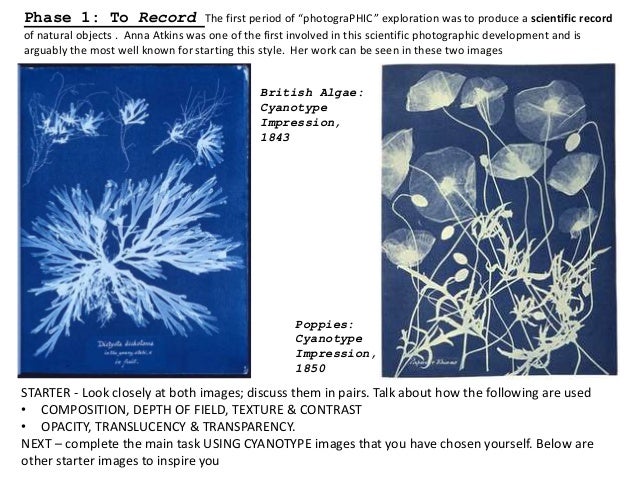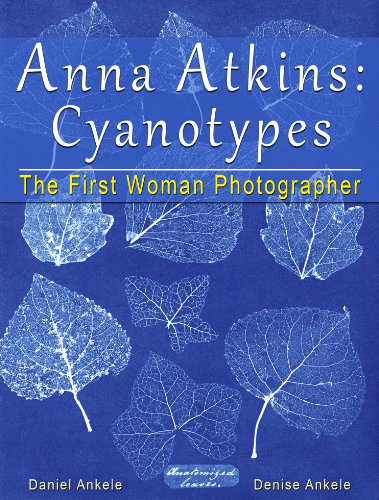Anna Atkins
French photographer Jean-Baptiste Frenet (1814-1898)
One of my favourite signs of Spring is seeing green leaves on the trees around me. And suddenly today, Google surprised me with that bright Prussian blue background under some beautiful leaves like alabaster ballerinas!
Google Doodle Anna Atkins' 261th Birthday
One of my favoyrite signs of spring is seeing green leaves on the trees around me. And today Google surprised me with that bright Prussian blue background under some beautiful leaves like alabaster ballerinas.
I was so curious to know about this beautiful Doodle. Oh! Yeah the Google Doodle celebrates today, 16th March, the 216th anniversary of the first woman photographer and botanist Anna Atkins. Another woman in science. Google loves women in science.
Anna Atkins
via Arte Revista CULT
English photographer noted for her early use of photography for scientific purposes. A British botanist whose use of cyanotypes - or 'sunprints' - of plants and algae in botanical studies paved the way for the use of photography in scientific publishing.
The delicate leaves used to spell out the name of the search engine are slate blue against a darker blue background. This is due to the cyanotype process, which involves the exposure of a mix of ammonium iron citrate and potassium ferricyanide to ultraviolet light, leaving the paper so-called Prussian blue.
Anna Atkins before Anna Children was born in Tunbridge, Kent, England in 1799. Her mother died while Anna Atkins was an infant, which made her particularly close to her father, John George Children, who was a highly respected scientist and a Fellow and Secretary of the Royal Society.
After marrying John Pelly Atkins in 1825, she pursued her interests in botany, for example by collecting dried plants which were probably used as photograms later on.
Portrait Anna Atkins, 1861
Wikipedia
After marrying John Pelly Atkins in 1825, she pursued her interests in botany, for example by collecting dried plants which were probably used as photograms later on.
Detail of title page of
Photographs of British Algae: Cyanotype Impressions
Anna Atkins Atkins is credited with being the first to use cyanotype, a printing process the uses cyan-blue print, for photography.
Initially she was trained as an English botanist and discovered photography as a means to document botanical specimens for a scientific reference book, entitled ‘British Algae: Cyanotype Impressions’.
Initially she was trained as an English botanist and discovered photography as a means to document botanical specimens for a scientific reference book, entitled ‘British Algae: Cyanotype Impressions’.
Anna Atkins' photograph
This book subsequently became considered to be the first book to demonstrate light-sensitive materials in a publication. As well as this, Atkins decided to use the Cyanotype process further by printing her hand-written text and illustrations through the means of this photographic process rather than using traditional letter pressing. And is considered to be the first book illustrated with photographs.
In 1843 Atkins printed and published Part I of ‘British Algae’, which in turn established photography as an accurate medium for scientific illustration.
These photograms became something of an artistic expression, although this was not her original goal, many of the photograms of plants can be celebrated as a significant scientific document but also for their thoughtful composition.
Here Rupert Baker of The Royal Society helping us to look at the world's first photo book published by botanist and photographer Anna Atkins in 1843.

A cyanotypee photogram made by Atkins
Photographs of British Algae: Cyanotype Impressions
These photograms became something of an artistic expression, although this was not her original goal, many of the photograms of plants can be celebrated as a significant scientific document but also for their thoughtful composition.
Here Rupert Baker of The Royal Society helping us to look at the world's first photo book published by botanist and photographer Anna Atkins in 1843.
From 1843 to 1853 she worked constantly to document her large collection of seaweed, which were then released as a 12-part series. In 1853 Anna Atkins teamed up with her childhood friend, Anne Dixon, who began to collaborate in creating photograms of ferns, flowers, feathers and lace.
By 1854, Atkins documented all the algae of the British Isles in her hundreds of photogramme impressions. Fewer than 20 copies of her pioneering book are known to exist — with one copy still in the hands of Herschel’s descendants as recently as 1985.
Through her career, Anna Atkins collected hundreds of specimens and in 1865 she donated her entire collection to the British Museum.
Through her cyanotypes, Atkins — who died in Kent in 1871 — blended photographic aesthetics with scientific advances.
A copy of Anna Atkins' book
No doubt! Google loves women in science. Ada Lovelace, Rosalind Franklin , Marie Curie , Grace Hoper , Dorothy Hodgkin, Gaetana Agnesi, Mary Anning, Dian Fossey, and today Anna Atkins.
Photographs of British algae: cyanotype impressions/ The New York Public Library/ Digital Collections
Children's book:
The Bluest of Blues Anna Atkins & The First Book of Photographs by Fiona Robinson is a gorgeous picture book biography of botanist and photographer Anna Atkins–the first person to ever publish a book of photography.
Weaving together histories of women, science, and art, The Bluest of Blues will inspire young readers to embark on their own journeys of discovery and creativity.
Age: 6-9
By 1854, Atkins documented all the algae of the British Isles in her hundreds of photogramme impressions. Fewer than 20 copies of her pioneering book are known to exist — with one copy still in the hands of Herschel’s descendants as recently as 1985.
Through her career, Anna Atkins collected hundreds of specimens and in 1865 she donated her entire collection to the British Museum.
Through her cyanotypes, Atkins — who died in Kent in 1871 — blended photographic aesthetics with scientific advances.
A copy of Anna Atkins' book
Rene' West, Anna Atkin's book, shot at the Metropolitan Museum, 2009
Education:No doubt! Google loves women in science. Ada Lovelace, Rosalind Franklin , Marie Curie , Grace Hoper , Dorothy Hodgkin, Gaetana Agnesi, Mary Anning, Dian Fossey, and today Anna Atkins.
The discussion of new discoveries and a better understanding of the role of women in many different areas of study such as humanities or science, and how these ideas and findings can lead to new markets for humanities and science knowledge are important aims.
Girls and women are more and more proving in different situations at school and in business that they are equal to men in the intelligence and capacity.
Constantly evolving education at all ages and levels in our ever-changing world is crucial.
Anna Atkins work
slide by Elaine Humpleby
This begins early in school where girls must be encouraged to access to humanities, science and technology.
The aim is to encourage creativity in the field of humanities, science, new technologies or arts and highlight the importance of developing innovative skills at an early age.
All the initiatives are welcome. As teachers we have an important role on it. And teachers are women in great number in our days.
Began by talking about yourself as a woman in a career that belonged to men for centuries.
And introduce Anna Atkins' doodle to continue discussing great women.
Explore the different Google Doodles who celebrate great women to motivate girls and young women in your lessons today.
Explore the different Google Doodles who celebrate great women to motivate girls and young women in your lessons today.
Anna Atkins: Cyanotypes
The First Woman Photographer
Denise Ankele
Photographer: Anna Atkins
Resources for teachers:
Cyanotypes of British Algae by Anna Atkins (1843)/ The Public Domain Review
Anna Atkins 1799 - 1871/ Science Museum
The Bluest of Blues
Anna Atkins & The First Book of Photographs
Fiona Robinson
Children's book:
The Bluest of Blues Anna Atkins & The First Book of Photographs by Fiona Robinson is a gorgeous picture book biography of botanist and photographer Anna Atkins–the first person to ever publish a book of photography.
Weaving together histories of women, science, and art, The Bluest of Blues will inspire young readers to embark on their own journeys of discovery and creativity.
Age: 6-9
"Despite some progress, women are deterred from pursuing a career in science at the highest levels. Much more must be done to address the reasons behind this potential waste of human talent."
Nature, Editorial
G-Souto
16.03.2015
updated 16.03.2019
updated 16.03.2019
copyright © 2015G-Souto'sBlog, gsouto-digitalteacher.blogspot.com®
Schools : Anna Atkins : Botanist and the 1st woman photographer by G-Souto is licensed under a Creative Commons Attribution-NonCommercial-NoDerivatives 4.0 International License.







.jpg)




No comments:
Post a Comment